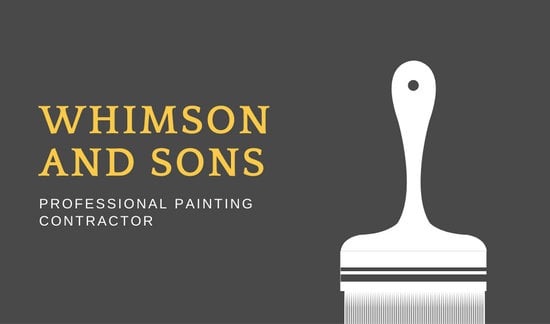Discover Just How Seasonal Influences Can Affect The Efficiency Of Business External Painting And Figure Out One Of The Most Desirable Times To Guarantee Durable Outcomes For Your Project
Discover Just How Seasonal Influences Can Affect The Efficiency Of Business External Painting And Figure Out One Of The Most Desirable Times To Guarantee Durable Outcomes For Your Project
Blog Article
Content By-Leach Skafte
When you're intending an industrial external paint job, seasonal factors can make or damage your results. You'll want to take into consideration how temperature and moisture impact paint application and drying times. Choosing the ideal period can guarantee your paint adheres appropriately and lasts longer. However which periods are really the most effective for this type of job? Let's check out the key elements that can impact your task's success.
The Effect of Temperature Level on Paint Application
When you're intending a commercial exterior paint task, the temperature level can substantially influence how well the paint sticks and dries.
Preferably, you want to repaint when temperatures vary in between 50 ° F and 85 ° F. If it's too chilly, the paint might not heal appropriately, causing concerns like peeling off or breaking.
On the flip side, if it's too hot, the paint can dry out as well rapidly, preventing appropriate bond and causing an uneven surface.
You ought to also think about the moment of day; morning or late afternoon uses cooler temperatures, which can be more beneficial.
Constantly examine the supplier's referrals for the specific paint you're making use of, as they typically provide assistance on the perfect temperature level array for optimum outcomes.
Moisture and Its Impact on Drying Times
Temperature level isn't the only ecological aspect that influences your industrial external paint job; humidity plays a significant role too. minneapolis painting contractors can decrease drying out times substantially, affecting the total top quality of your paint job.
When the air is saturated with wetness, the paint takes longer to cure, which can cause concerns like bad bond and a higher threat of mildew development. If you're repainting on a particularly damp day, be gotten ready for extended wait times in between layers.
It's vital to keep track of local climate condition and strategy appropriately. Preferably, aim for humidity levels between 40% and 70% for optimal drying out.
Maintaining these factors in mind guarantees your project remains on track and provides a lasting coating.
Best Seasons for Commercial Outside Painting Projects
What's the most effective time of year for your commercial outside paint projects?
Springtime and early fall are generally your best options. During these periods, temperature levels are moderate, and humidity levels are commonly reduced, developing suitable problems for paint application and drying.
Avoid summer season's intense heat, which can create paint to completely dry also rapidly, resulting in inadequate bond and finish. Similarly, wintertime's cold temperature levels can prevent correct drying out and curing, risking the durability of your paint task.
Aim for days with temperatures in between 50 ° F and 85 ° F for ideal results. house painters denver in mind to examine the local weather report for rain, as wet conditions can spoil your project.
Preparation around these factors guarantees your painting project runs efficiently and lasts much longer.
Final thought
To conclude, preparing your industrial exterior paint jobs around seasonal factors to consider can make a considerable difference in the result. By organizing work throughout the optimal temperature levels and moisture levels, you'll ensure better adhesion and drying times. Remember to watch on local weather report and pick the right time of year-- springtime and early fall are your best choices. Taking these actions will certainly assist you achieve a resilient and expert coating that lasts.
